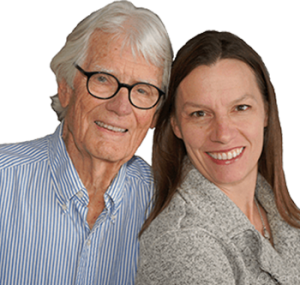The festive season is a time for social gatherings and alcohol often aides the merrymaking. Yet recent headlines advise to avoid alcohol at any time of year. The claim is that there is no safe level of alcohol consumption. But the truth about alcohol is more nuanced, and recommendations for abstinence can be misleading.
The recent research concluded that even moderate alcohol consumption – about one drink a day – is dangerous for your health. But the study took a narrow look. Many studies of alcohol use neglect to consider the healthy benefits of socializing. But when people are socially connected, they make healthier choices, have better physical and mental health, and cope better with everyday pressures, meaning less anxiety and depression.
Was it going to far to advocate for a pub in every hospital? Imagine being confined within four white walls and worried about your health. A caring hospital pub and the doctor’s blessing could ease the mind and blood pressure too.
There’s some judgement needed. Like most things, the pros and cons of alcohol are not defined in two neat categories of good and evil. There are many factors to consider, not least of which is the state of one’s mental health.
The highly respected Mayo Clinic acknowledges the health benefits of moderate alcohol consumption. The list includes lower risk of diabetes and of developing and dying of heart disease. The risk of ischemic stroke, caused when the arteries to the brain become blocked restricting blood flow, is also lessened.
Harvard University’s T.H. Chan School of Public Health presents an excellent synopsis of the science on moderate drinking in a section of its website called The Nutrition Source. “Moderate drinking seems to be good for the heart and circulatory system, and probably protects against type 2 diabetes and gallstones,” it says.
“The active ingredient in alcoholic beverages, a simple molecule called ethanol, affects the body in many different ways. It directly influences the stomach, brain, heart, gallbladder, and liver. It affects levels of lipids (cholesterol and triglycerides) and insulin in the blood, as well as inflammation and coagulation. It also alters mood, concentration, and coordination.”
Let there be no doubt, when alcohol consumption moves past moderation, there is little good to come of it. The Nutrition Source makes this clear with a few poignant statistics. Alcohol plays a role in one in three cases of violent crime. Alcohol abuse costs about $249 billion a year. And the staggering human cost of accidents involving alcohol, especially car crashes, is impossible to measure. This societal problem should have been fixed long ago by breathalysers attached to every ignition switch.
The Nutrition Source weighs the research on alcohol and cardiovascular disease, noting it makes common sense that there would be benefits. “Moderate amounts of alcohol raise levels of high-density lipoprotein (HDL, or “good” cholesterol), and higher HDL levels are associated with greater protection against heart disease.” This and other effects “tend to prevent the formation of small blood clots that can block arteries in the heart, neck, and brain, the ultimate cause of many heart attacks and the most common kind of stroke.”
It’s all summed up in Harvard’s bottom line. “Given the complexity of alcohol’s effects on the body and the complexity of the people who drink it, blanket recommendations about alcohol are out of the question.”
Many things in life involve nuances. So be informed, prudent, and open-minded. Companionship and the pleasure of a drink before or with dinner may be just the ticket to a long and happy life.
Sign-up at www.docgiff.com to receive our weekly e-newsletter. For comments, contact-us@docgiff.com. Follow us on Instagram @docgiff and @diana_gifford_jones.

